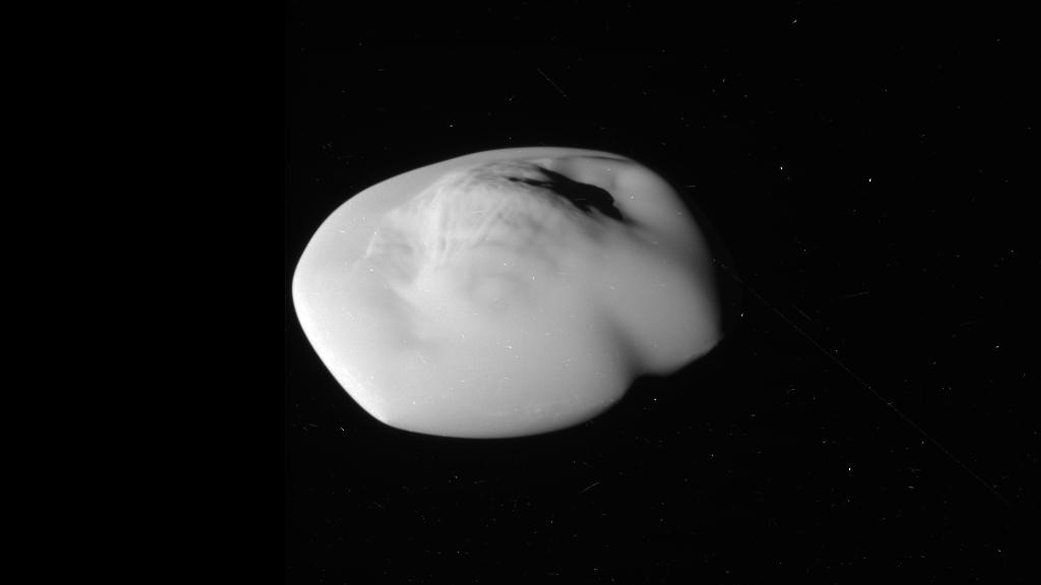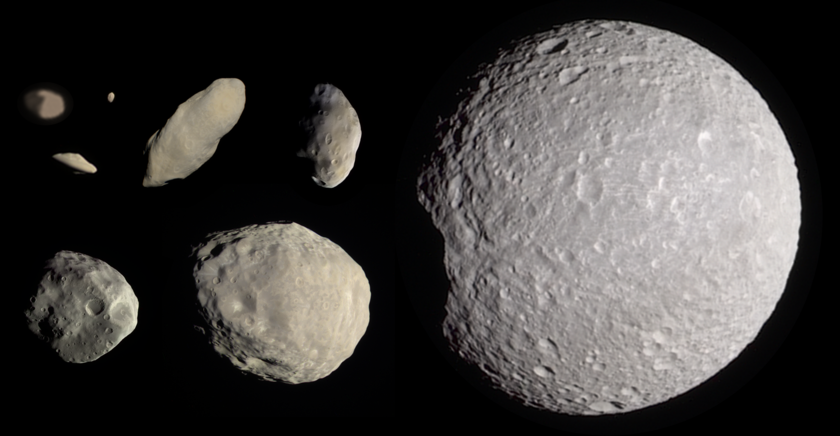
"Sizes, shapes, and derived properties of the saturnian satellites after the Cassini nominal mission" (PDF). "The orbits of Saturn's small satellites derived from combined historic and Cassini imaging observations". "Satellites of Jupiter and Saturn" (naming the moon). Archived from the original (discovery) on. (Subscription or participating institution membership required.) The moon Atlas is named after the Greek mythology god Atlas. Because the orbits of Prometheus and Pandora are chaotic, it is suspected that Atlas's may be as well. Atlas is one of Saturns 82 known moons (natural satellites). Ītlas is significantly perturbed by Prometheus and to a lesser degree by Pandora, leading to excursions in longitude of up to 600 km (~0.25°) away from the precessing Keplerian orbit with a rough period of about 3 years. This would mean that for any additional particles impacting the equator, the centrifugal force will nearly overcome Atlas's tiny gravity, and they will probably be lost. In fact, the size of the equatorial ridge is comparable with the expected Roche lobe of the moon. The most likely explanation for this unusual and prominent structure is that ring material swept up by the moon accumulates on the moon, with a strong preference for the equator due to the ring's thinness. High-resolution images taken in June 2005 by Cassini revealed Atlas to have a roughly spherical centre surrounded by a large, smooth equatorial ridge. In 2004 a faint, thin ring, temporarily designated R/2004 S 1, was discovered in the Atlantean orbit. However, now it is known that the outer edge of the ring is instead maintained by a 7:6 orbital resonance with the larger but more distant moons Janus and Epimetheus. It is also designated Saturn XV.Ītlas is the closest satellite to the sharp outer edge of the A ring, and was long thought to be a shepherd satellite for this ring.


In 1983 it was officially named after Atlas of Greek mythology, because it "holds the rings on its shoulders" like the Titan Atlas held the sky up above the Earth. Atlas is an inner satellite of Saturn which was discovered by Richard Terrile in 1980 from Voyager photos and was designated S/1980 S 28.


 0 kommentar(er)
0 kommentar(er)
